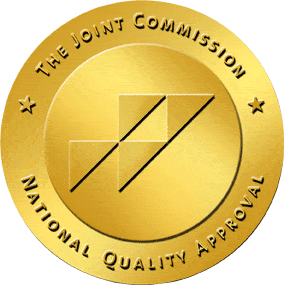Written by Kate Fisch, LCSW – AVP of Clinical Partnerships, Eating Disorder Network
A common stumbling block on the road to eating disorder recovery is ongoing negative body image thoughts. Even after someone has progressed towards recovery by significantly decreasing their eating disorder behaviors and repairing their relationship with food, negative body image concerns commonly remain. Negative body image thoughts can trigger someone working on eating disorder recovery to return to restricting or other eating disorder behaviors to alter their body shape and size and relieve the distress that comes with body image concerns.
What Is Body Image?
Body image refers to the attitudes and perceptions an individual has about their body. The way we perceive our bodies is shaped over time by our personal experiences and then reinforced by the messages we receive about our bodies from our social environment. When someone is struggling with an eating disorder, they have a negative perception of their body and perceive their body shape and size to be larger than it is. The negative way they view their bodies causes significant distress and can even impact their social functioning.
What Factors Perpetuate Negative Body Image?
There are two common behaviors that perpetuate negative body image for someone with an eating disorder: body checking and body avoidance.
Body checking is the repeated scrutinization of the body in general or one specific part of the body. People with an eating disorder are “checking” to see if there’s something “wrong” with their body or to reassure themselves that their body hasn’t changed. Body checking often feels compulsive – like something an individual must do. The pull to body check can be so intense at times that it interferes with someone’s ability to focus. Examples of body checking include:
- Weighing themself often
- Measuring their body by touching, pinching, or mentally scanning a specific area
- Seeing reassurance from others about their body
- Comparing their appearance with others
- Analyzing their bodies in reflective surfaces like a window or mirror
- Obsessing over old photos or videos
- Assessing the fit of clothing and obsessing over clothing size
Body checking behaviors reinforce negative body image thoughts by keeping the focus on the body. Further, this attention to body shape and size exaggerates its importance in a person’s daily life.
Body avoidance is the opposite of body checking but similar in how it contributes to perpetuating negative body image. Body avoidance behaviors include any attempts to hide or cover up all or parts of the body. This might look like wearing oversized or baggy clothing or avoiding any contact with mirrors or other reflective surfaces. People who engage in body avoidance may avoid situations where others might see their bodies, like at a swimming pool or exercise class. Individuals struggling with an eating disorder avoid experiencing their bodies to avoid feeling the emotional distress that comes with their body dissatisfaction.
Although, it might seem like a good idea to avoid something that causes distress, unfortunately, our brains are wired to think about what we’re trying to avoid. In our attempts to not think about something, we create a hyper vigilance of anything that reminds of that stimulus.
How to Treat Negative Body Image
In treatment, one strategy to address negative body image is cognitive behavior therapy (CBT), during which the individual is asked to identify any distortions in their thinking about their bodies. For example, are they evaluating their body using all or nothing or black and white standards? Additionally, the work might focus on redefining what a person finds valuable in their life that have nothing to do with appearance. Finally, during treatment, social media and the messages from our environment about what a person should look like are challenged.
Often, the first issues addressed when a person presents for eating disorder treatment are a reduction in the eating disorder behaviors, such as restricting, or bingeing and purging. It’s vital to include body image improvement from the start as well to avoid any potential recovery obstacles that could result in relapse.
If you or your loved one is struggling with a negative body image and an eating disorder, find the location nearest you today. We’re here to help.





